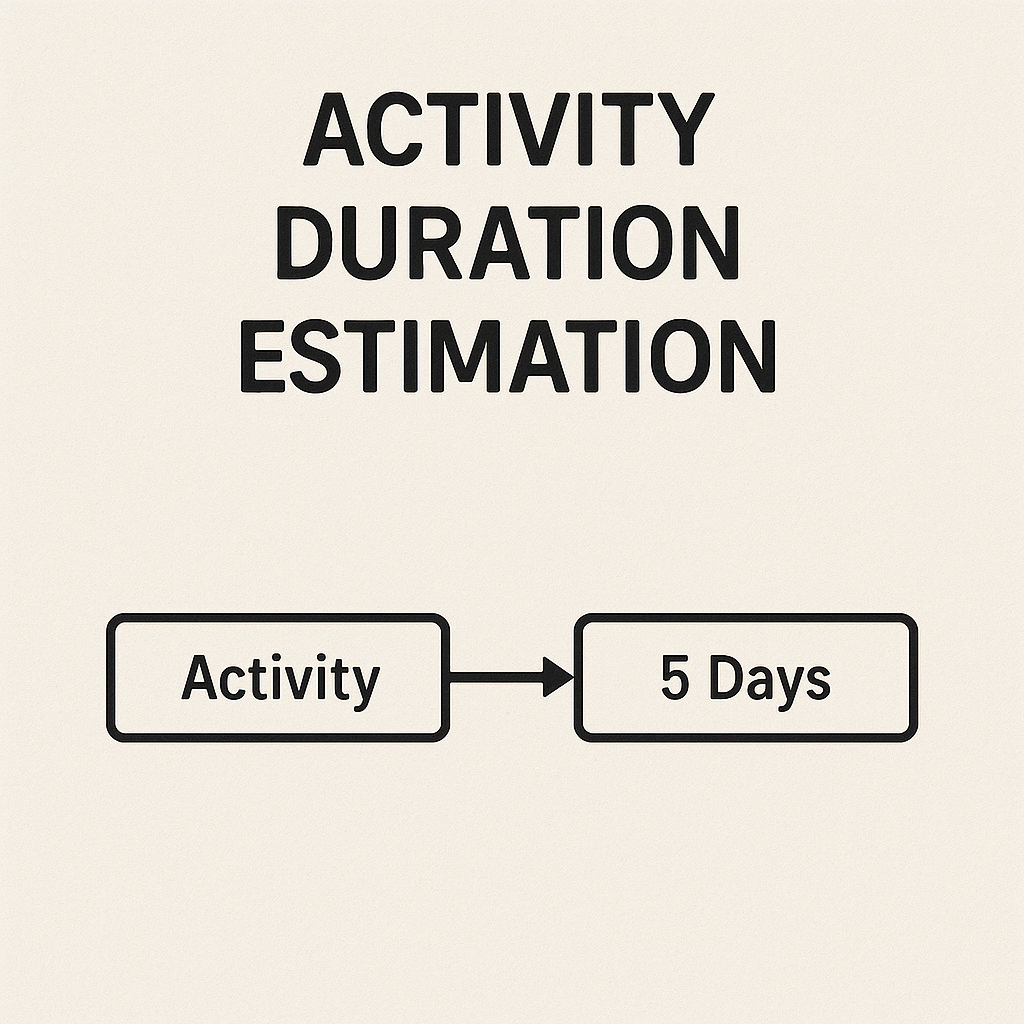

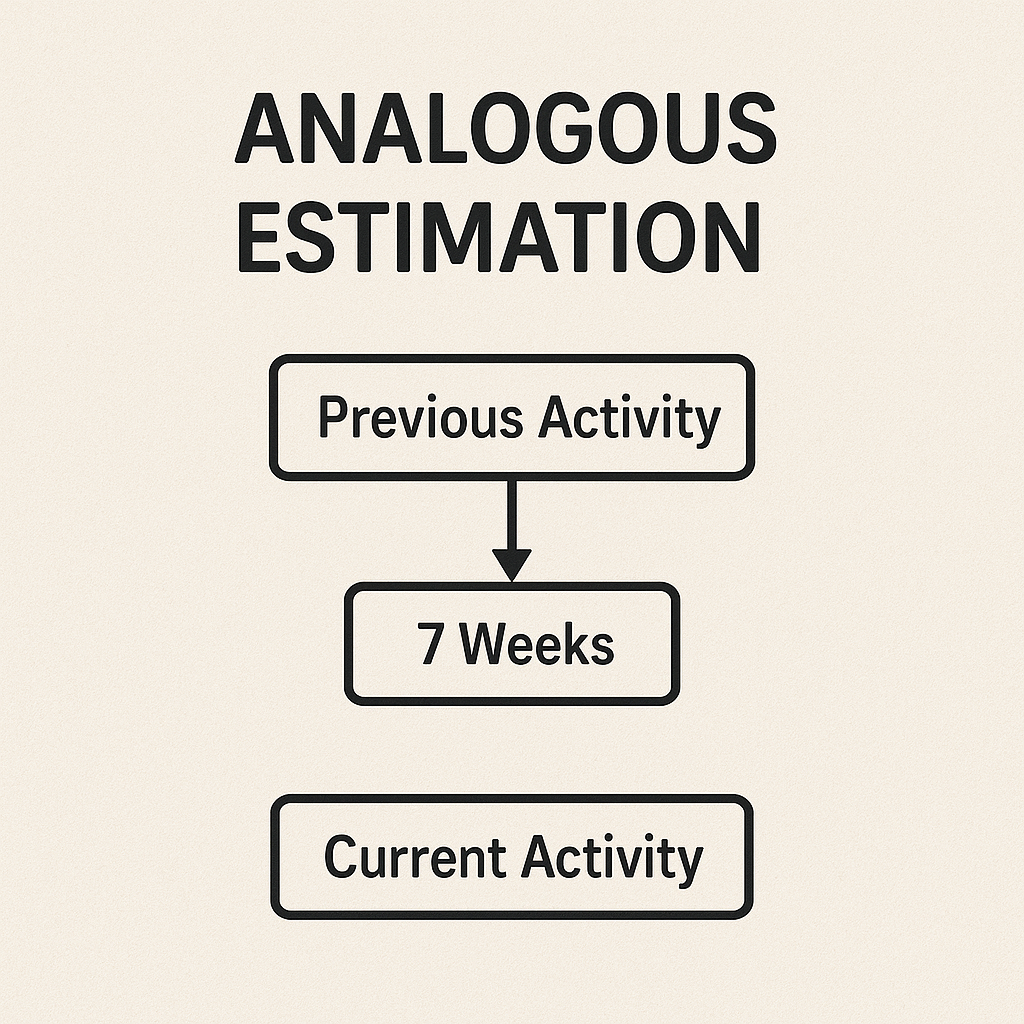

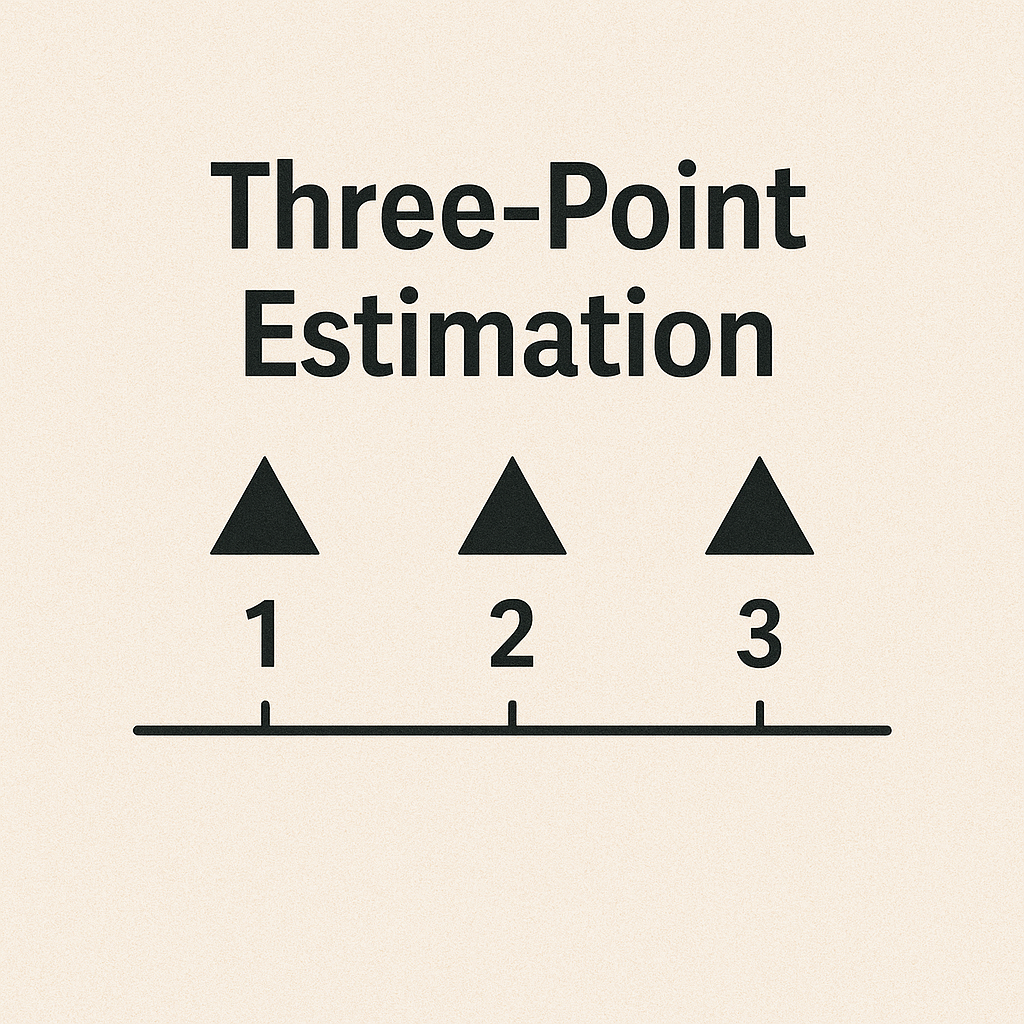
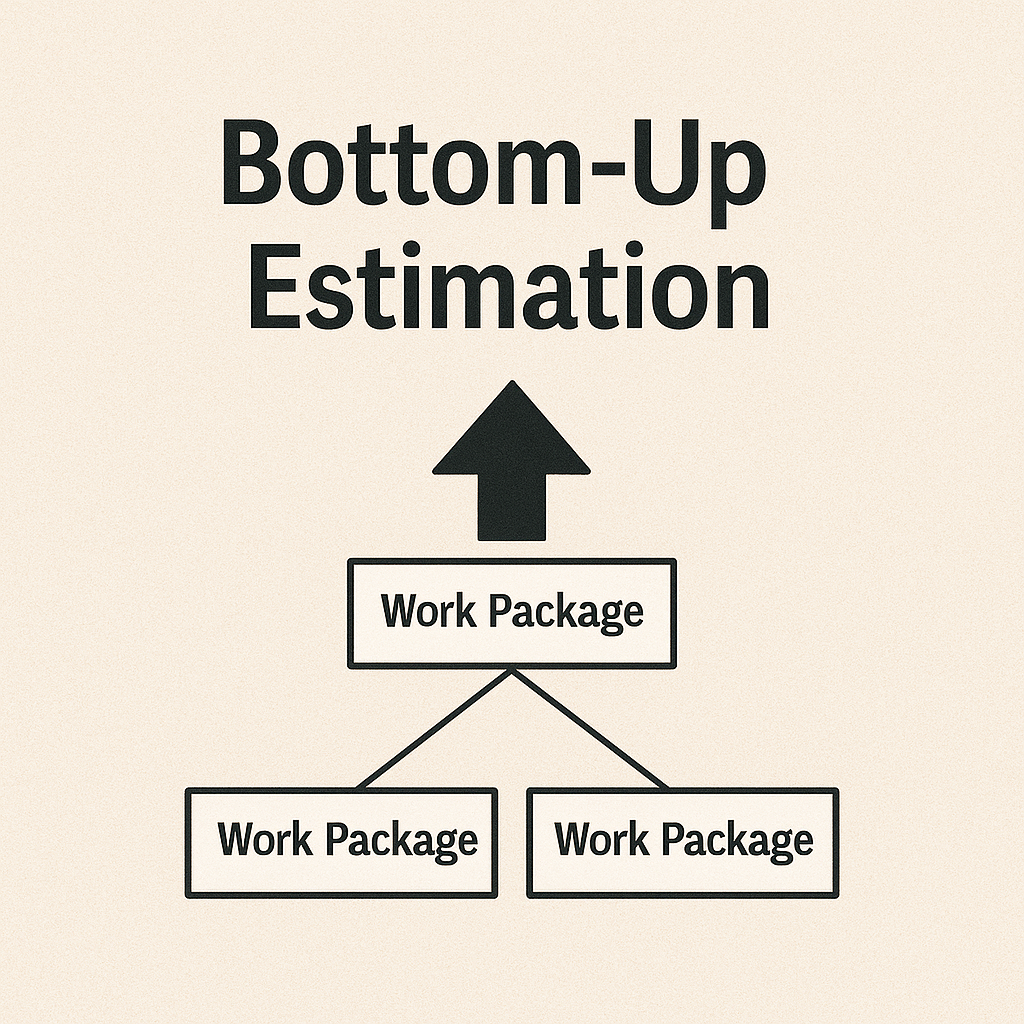
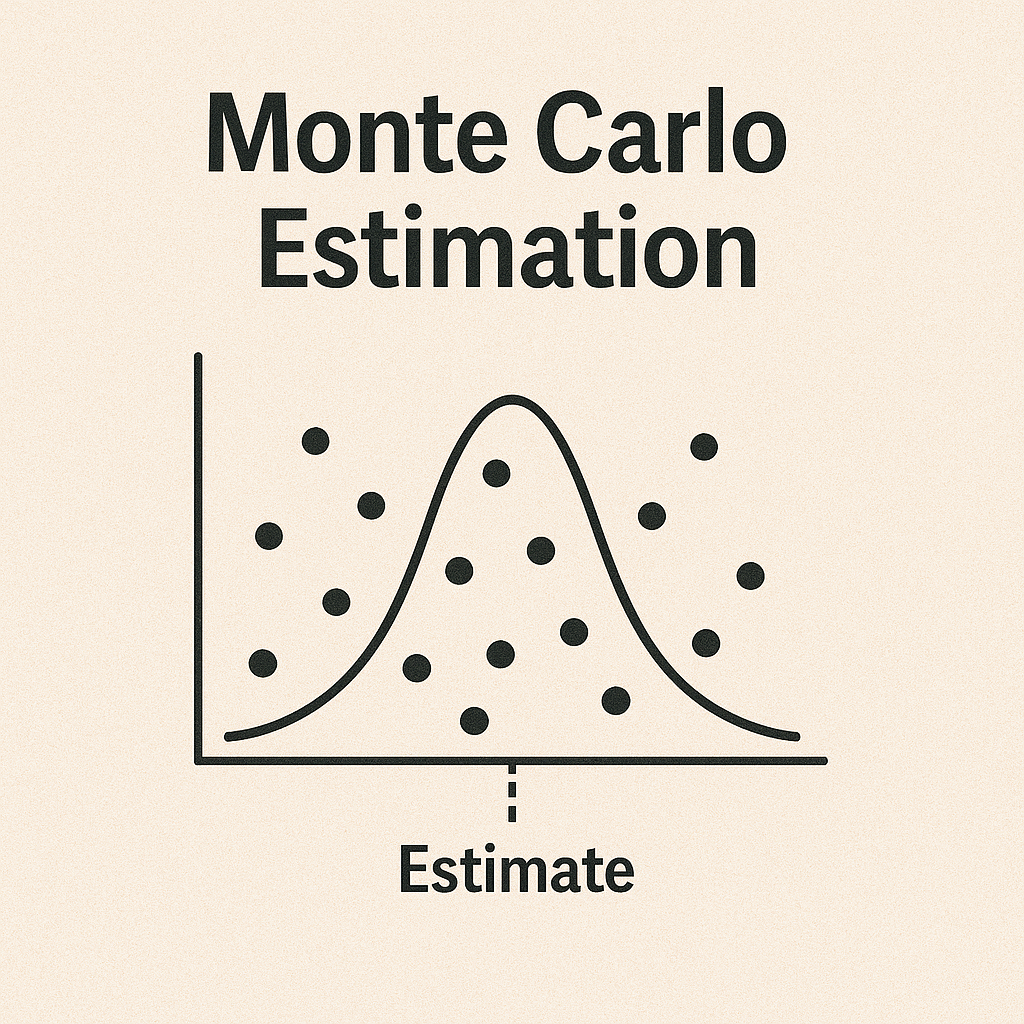
Many of the techniques like Analogous estimation, Parametric estimation, Three point estimates, Bottom up estimation etc are common in both cost estimation and activity duration estimation.
Activity duration estimation is a critical aspect of project management, particularly in the realm of scheduling and resource allocation. Here are some commonly used tools and techniques for activity duration estimation:
- Expert Judgment: Utilizing the expertise of individuals or groups who have experience in similar projects or activities can provide valuable insights into estimating activity durations.
- Analogous Estimating: This technique involves using historical data from similar projects as a basis for estimating the duration of current activities. It’s particularly useful when there’s limited information available about the current project.
- Parametric Estimating: This method involves estimating activity durations based on mathematical models that consider variables such as size, complexity, or other factors that influence duration. For example, estimating the time it takes to complete a task based on a per-unit rate (taking an average from the historical data of similar events)
- Three-Point Estimating: Also known as PERT (Program Evaluation and Review Technique), this technique involves estimating three scenarios for each activity: the optimistic (O), pessimistic (P), and most likely (M) durations. The formula (O + 4M + P) / 6 or (O+P+M)/3 is then used to calculate the expected duration.
- Expert Interviews: Conducting structured interviews with subject matter experts to gather insights and opinions on how long specific activities are likely to take.
- Delphi Technique: This technique involves anonymously surveying a panel of experts regarding their estimates for activity durations. The responses are then aggregated and iteratively refined until a consensus is reached. Similar to brainstorming with the only difference in collecting anonymous inputs in Delphi.
- Bottom-Up Estimating: This involves breaking down project activities into smaller, more manageable tasks and estimating the duration of each task individually. The estimates are then aggregated to determine the overall duration.
- Group Decision-Making Techniques: Techniques such as brainstorming or nominal group techniques can be used to facilitate group discussions and reach a consensus on activity durations.
- Historical Information: Reviewing historical data from similar projects or activities to gain insights into how long certain tasks typically take to complete.
- Monte Carlo Simulation: This advanced technique involves using computer simulations to model the uncertainty inherent in project durations. It generates a range of possible outcomes based on probabilistic estimates of activity durations and dependencies.
Each of these techniques has its advantages and limitations, and project managers often use a combination of them to arrive at more accurate estimates.
